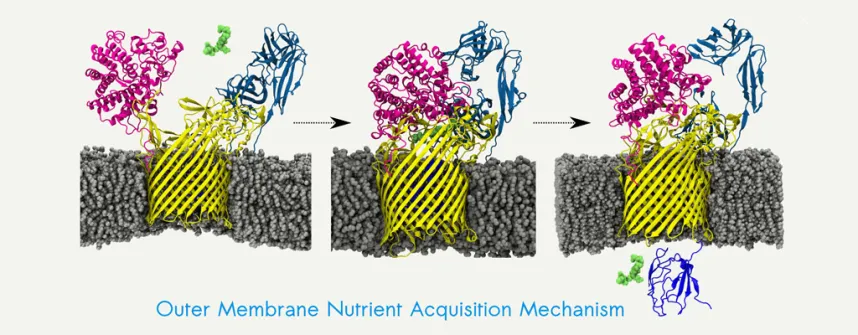‘Pedal bin machine’ of gut bacteria revealed
,
A nutrient molecule (green) overcomes the cell membrane (grey) of a bacterium with the help of a channel protein (SusC, yellow). The graphic shows how this process is supported by a substratebinding protein (SusD, in pink) as well as lipoproteins (SusEF, in blue). Graphics: Karunakar R. Pothula / Jacobs University
January 11, 2017
